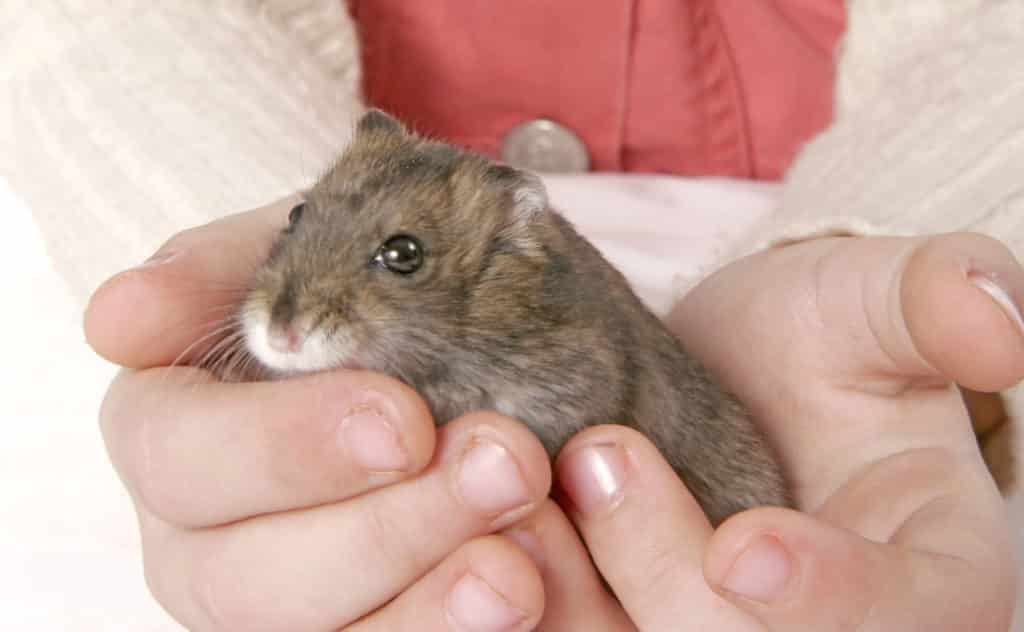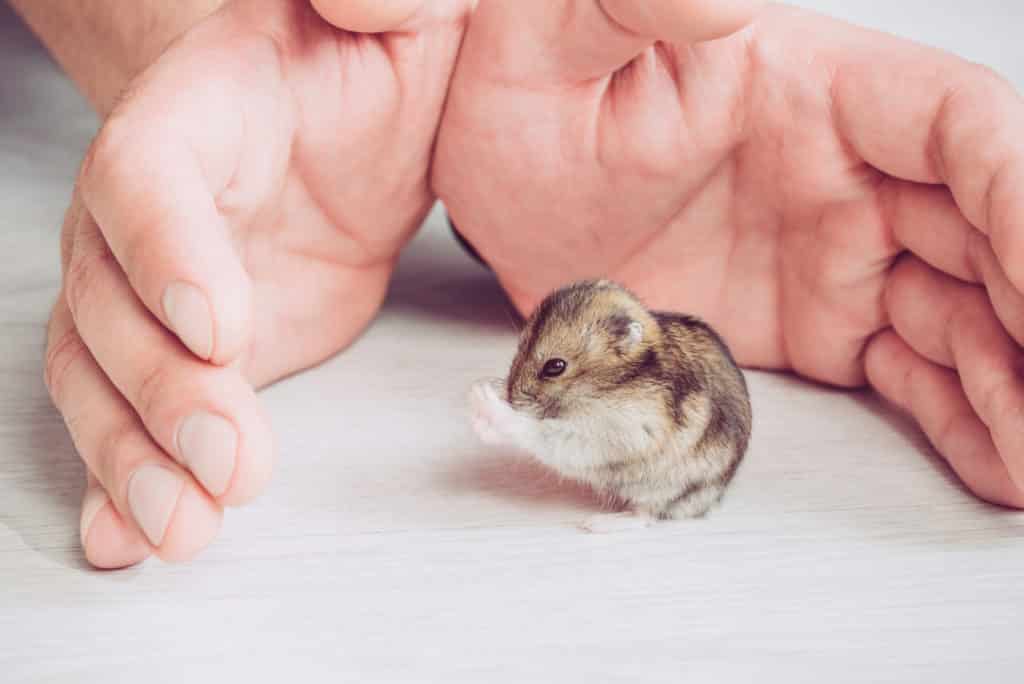Hamsters, just like any animal, are prone to several diseases. Some of these diseases are not dangerous and go away by themselves. But some diseases are dangerous and must be treated immediately. One such disease in hamsters is Wet Tail.
Wet Tail in hamsters
The Wet Tail is a very dangerous disease. Even though the main symptom of this disease is watery diarrhea in hamsters, it is much more dangerous than regular diarrhea. Among all the species of pet hamsters, Syrian hamsters are the ones most prone to it. Dwarf hamsters aren’t as prone to the Wet Tail disease as Syrian hamsters.
Hamsters suffering from Wet Tail often die within a few days if not treated promptly. But even if treated early, there is no assurance that a hamster will survive Wet Tail.
Wet Tail gets its name because hamsters suffering from the Wet Tail disease have wetness around their tail and rear end due to diarrhea. Even though Wet Tail can affect hamsters of any age, it is commonly seen in baby hamsters less than four weeks of age, whose immune systems wouldn’t have fully developed. Even though adult hamsters can also get Wet Tail, they aren’t as susceptible to it.
Causes
Poor sanitation
Wet Tail is caused by a bacterium called Lawsonia intracellularis, which infects hamsters’ intestines. A dirty cage can be a breeding place for this bacterium. So, poor sanitation, leading to bacterial infection, is the main reason behind the disease.
Stress
The biggest risk factor for Wet Tail in hamsters is stress. Younger hamsters grow up with their litter in the care of their mother. When they start weaning off, hamsters are mostly separated from their mother and their litter and taken to a new home, where nothing is similar to the environment where they once lived. So, they can get extremely stressed. Trauma, like a noisy living environment, improper and/or early handling, and attacks from other animals, can compound this stress. So, hamsters around the age of four weeks, when they start weaning off, are more prone to Wet Tail than other age groups.

Improper diet
Giving your hamster fruits and vegetables is good. It adds variety to your hamster’s diet and keeps your hamster healthy.
But you should understand that hamsters are desert animals. Their bodies have evolved to conserve water efficiently. So, giving fruits and vegetables with a high water content and/or fiber content moderately once in a while is good. But if you give too much of these at a time and/or too often, their digestive systems will not be able to handle the excessive water and fiber content. So, they will get diarrhea. And if the environment they live in is not clean, diarrhea can quickly escalate to Wet Tail.
Symptoms
Now that we know what Wet Tail is and what causes it, let’s look at its symptoms.
- Wet tail and/or bottom
- Watery diarrhea
- Blood around the anus or in the stool
- Foul odor
- Dehydration
- Weight loss
- Hunched posture
- Lethargy
- Loss of appetite
- Unusual anger
Treatment
Wet Tail is an extremely dangerous disease. Hamsters can die within 48 hours of the appearance of symptoms. But if treated within the first 24 – 48 hours, recovery is possible (Source: Wikipedia).
So, if you notice any symptoms of Wet Tail, take your hamster to a veterinary doctor immediately. The vet will first determine if your hamster has Wet Tail. Then, he might administer antibiotics and anti-diarrhea medicines to your hamster.
If your hamster is too dehydrated, the vet might also provide intravenous liquids (Source: PBS Pet Travel). If not, you can give your hamster water using a normal bottle. But if your hamster doesn’t want to drink water, lift him up by holding the extra skin on the back of his neck. Then, using a 1ml syringe, feed water through his mouth in short intervals. However, you should be careful so that you don’t get any water into your hamster’s windpipe.
Feed your hamster only dry foods. Food items with a high water content should be avoided.
Wet Tail is highly contagious. So, isolate the sick hamster from other hamsters. Clean and sanitize the cage, your hamster’s food bowl, the hamster wheel, and any other hamster toys.
Prevention
- Spot clean your hamster’s cage every day. Once a week, replace the bedding and sanitize the cage, food bowl, hamster wheel, and hamster toys.
- When purchasing a hamster, check if the hamster looks healthy. Make sure that he is active, his bottom is not wet and is free of fecal matter, and his eyes are open.
- If the hamster you intend to purchase is living with a sick hamster, don’t buy the hamster.
- When you bring a new hamster home, take him to a vet for a health check-up before letting him live with your other hamsters. If you have only one hamster, take him to a vet within the first month of bringing him home.
- Some vets recommend giving a new hamster Wet Tail drops when you bring him to your home. Wet Tail drops have an antibiotic in them. They can be purchased without a prescription from a vet (Source: The Spruce Pets). You can mix an appropriate amount of Wet Tail drops in your hamster’s water bottle.
- Introduce food items slowly to your hamster. Avoid food items with a lot of water content and/or dietary fiber. If you are not sure about a particular food item, consult a vet. A vet can also help you create a diet plan for your hamster.
- Take your hamster for regular health check-ups.
- If one of the hamsters shows symptoms of Wet Tail, first separate the infected hamster immediately from the healthy hamsters. Then, clean and sanitize the cage thoroughly.



